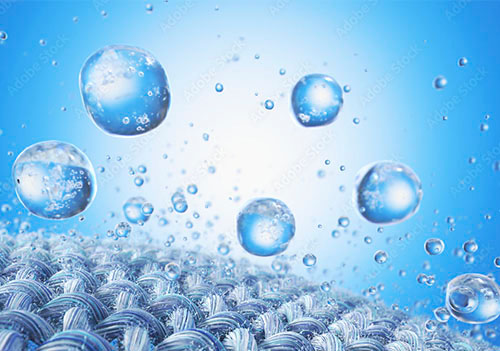KSIL®
Potassium Silicate
The soluble silicates in their different forms: amorphous glass, granular solids or liquid solutions, represent one of the most commonly used chemical products. Its industrial boom started in the 19th century, when ground-breaking applications in detergents, adhesives and refractory paints were developed. Its applications have been diversified today in different fields: detergents, paper, construction, paints, water treatment, industrial product raw materials; fields that cover applications both in industry and in consumer goods.
The procedures for its preparation and industrial production are based on a melting process above 1000ºC, normally from silica, in its quartz crystalline form and sodium or potassium carbonate, obtaining silicate in its amorphous crystal or glass form.
The silicate solutions, also called liquid silicates, are the mostly commonly used silicates. They are obtained in a second stage by dissolution of the amorphous crystal in water at a high temperature and pressure. There are other synthesis channels for products in solution, such as the direct attack of silica with caustic soda.
IQE has been present on the soluble silicate market for more than 50 years, manufacturing a wide range of products under different trade names. IQE has acknowledged experience in research, development, production and marketing of its entire range of specifications and applications of silicates. New products are continuously being developed at its research laboratories, passing through pilot plants, to complete the development at its industrial production plants.
KSIL® is the trade name for the potassium silicates marketed by IQE. These products are specially designed for the mineral paint and electrode manufacturing sectors, without forgetting special applications in the manufacture of soaps, detergents or agricultural products.
IQE is a member of CEES (Centre Européen d’Études des Silicates), a sector group of the CEFIC (European Chemical Industry Council). – www.cees-silicates.org – through which it actively participates in the different initiatives for the assessment, control and improvement of environmental and personal risks for soluble silicates: life cycle analysis (LCI), REACH, BREF, ICCA HPV…
regulation The silicate composition can be expressed under the following general formula: nSiO2 : Na2O, where n: molar ratio and M = Na, K
The majority of the properties of alkaline silicates depend on the molar ratio n and its solid percentage, and their applications derive from them.
The soluble silicates can be presented in very different forms and compositions. The sodium silicates nSiO2 : Na2O, marketed by IQE with the trade names of NASIL® and FUNSIL®, and the potassium silicates nSiO2: K2O, marketed with the trade name of KSIL® are differentiated depending on the nature of the alkaline ion.
The soluble silicates that are presented in amorphous or glass solids format are products that are obtained when they come out of the melting furnace in the first production phase. They are mainly used internally as a raw material to prepare solutions. IQE also markets these products with references NASIL® C/ and KSIL® C/.
The silicate solutions are viscous and alkaline liquids, with a pH of between 10 and 14. Their alkalinity increases continuously as the n value decreases. They are solutions whose viscosity varies depending on the quantity of dissolved solid (concentration), on the molar ratio and on their temperature.
Products
KSIL® 2.2
Potassium silicate solution with ratio in weight of 2.2 and average density of 1.314 g/cm3 (34.5º Be). It is a highly consumed soluble potassium silicate. It is used in sectors such as construction, restoration, mineral paints and electrodes. It is obtained from the pressurised solution of soluble glass from the melting furnace and subsequent filtration. Other potassium formulations could be manufactured if requested by the customer. A table is enclosed with other representative potassium products in IQE.
Markets it targets:
KSIL® C/2.2
Soluble potassium silicate in the form of an amorphous solid or liquid glass, with a weight ratio of 2.2. Obtained at the exit of the melting furnace during the first stage of production, it is mainly used internally as a raw material to prepare solutions subsequently used to prepare electrodes and mineral paints.
Markets it targets:
KSIL® 34
Aqueous solution of the potassium salt of polymerised silicic acid. Its density is 1.32 g/cc and it is used as a source of silica and potassium for plants while increasing resistance to environmental factors and may have a preventive effect against fungal growth.
Markets it targets:
KSIL® 46
Aqueous solution of the potassium salt of polymerised silicic acid. Aqueous solution of the potassium salt of polymerised silicic acid. Its density is 1.46 g/cc and has a high SiO2 content (28%). It is used as a source of silica and potassium for plant fertiliser.







